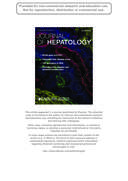Staging chronic hepatitis B into seven categories, defining inactive carriers and assessing treatment impact using a fibrosis biomarker (FibroTest®) and elastography (FibroScan®).
Journal of hepatology
Poynard T, Vergniol J, Ngo Y, Foucher J, Thibault V, Munteanu M, Merrouche W, Lebray P, Rudler M, Deckmyn O, Perazzo H, Thabut D, Ratziu V, De Lédinghen V
2014 J. Hepatol. Volume 61 Issue 5
PubMed 25016224 DOI 10.1016/j.jhep.2014.06.027
BACKGROUND & AIMS
The first aim was to extend the validation of FibroTest® (FT) and transient elastography (TE) as markers of occurrence of cirrhosis without complications (F4.1), oesophageal varices (F4.2), and severe complications (F4.3) in patients with chronic hepatitis B (CHB). The second aim was to validate a previous definition of an inactive carrier based on normal FT and ActiTest® (normal-FT-AT). The third aim was to assess the long-term dynamics of fibrosis in patients with sustained virological response.
METHODS
The 10-year updated individual data of 1434 patients were pooled from two prospective cohorts.
RESULTS
Of the 1312 patients without a history of complications, varices had occurred after 10 years in 14 patients (F4.2, incidence of 1.7%, 95% CI [0.6-2.8]), and severe complications in 25 (F4.3 3.7% [1.8-5.7]), including hepatocellular carcinoma (HCC) in 21 (3.7% [1.5-5.8]). Using Cox-multivariate analysis adjusted for treatment, viral load, HBeAg status and ALT, FT, and TE were predictive of liver complications (n=37; AUROC=0.83 [0.71-0.90]; p<0.0001) and (n=8/844; AUROC=0.82 [0.72-0.89]; p<0.0001) respectively. Normal FT-AT better identified patients with lower fibrosis progression than the ALT-based standard: 3/163 (1.8%) vs. 16/181 (8.8%; p=0.004) in the Paris cohort, and 5/195 (2.6%) vs. 15/228 (6.6%; p=0.05) in the Bordeaux cohort. Of the 582 responders, 23 had complications (incidence 6.2% [3.2-9.1]) including 19 HCC (5.8% [2.6-9.0]) and 10 with varices (2.6% [0.8-4.4]). Of the 138 responders with advanced fibrosis, only 31% (15-47%) had fibrosis regression.
CONCLUSIONS
FibroTest® and TE identified three categories of cirrhosis with increasing morbidity. Normal FibroTest® and ActiTest® were better able to identify inactive hepatitis B carriers than the standard definition. Despite virological response, the overall incidence of cirrhosis increased, with a remaining 5.8% risk of HCC.
Citation Reference:

